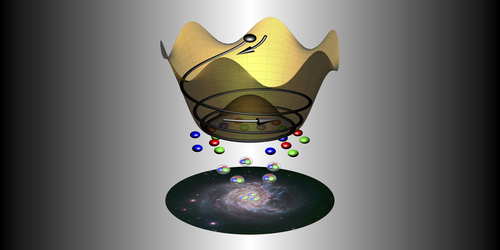Axions Could Explain Baryon Asymmetry
Finding axions—hypothetical particles that are promising candidates for dark matter—could solve one of the most prominent remaining mysteries in physics. Such a discovery could also solve a second mystery, the strong CP problem in quantum chromodynamics (QCD), if it involves a special “QCD axion.” Now Raymond Co of the University of Michigan, Ann Arbor, and Keisuke Harigaya of the Institute for Advanced Study in Princeton, New Jersey, propose that finding QCD axions might also solve a third enigma: What caused matter to outweigh antimatter in the early Universe (an asymmetry that led to today’s matter-filled Universe)?
The two researchers didn’t set out to find a solution to the matter-antimatter problem. Co and Harigaya were thinking about the implications of a QCD axion field—the field equivalent of the QCD axion particle—on the evolution of the early Universe. They wanted to know what would happen if that axion field experienced a rotation rather than the oscillation others have already considered. They realized that certain ideas from quantum gravity imply that such a rotation is possible or even likely. They also realized that rotating the axion field could also generate an asymmetry in the amounts of matter and antimatter in the Universe—a process they dubbed axiogenesis.
To test their hypothesis, Co and Harigaya say that a better theoretical understanding is needed of the factors that determine how efficiently the axion field rotation causes matter-antimatter asymmetry. But they note that their current theory does make predictions that depart from those of the standard model and that may be testable with existing particle colliders.
This research is published in Physical Review Letters.
–Erika K. Carlson
Erika K. Carlson is a Corresponding Editor for Physics based in Brooklyn, New York.




